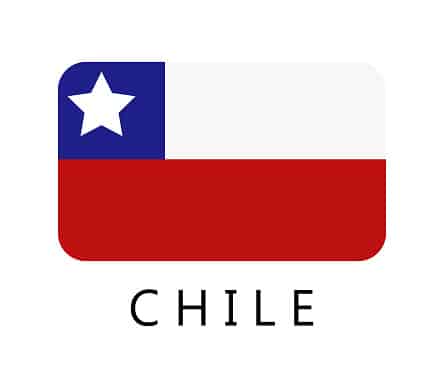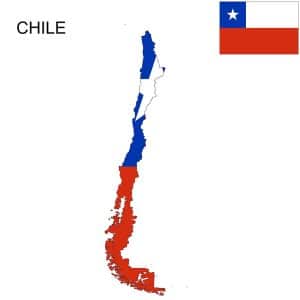Headlines
Chile Population, Official Language And More.

Chile is now a stable and prosperous democracy, with a diverse and multicultural society, a strong economy, and a prominent role in regional and global affairs. Chile has established diplomatic relations with many countries, including its former enemies, and participates in various international organizations and treaties. Chile is also known for its natural beauty, cultural heritage, and artistic expression.

Chile

Chile
The Population
Chile has a population of about 19.12 million people as of 2023, according to the World Population Review. The population is mostly concentrated in the central and northern regions, especially in the capital city of Santiago, which has about 7 million inhabitants. The population is composed of various ethnic groups, such as mestizo (mixed European and indigenous), white, indigenous, Afro-Chilean, and immigrant. The majority of Chileans are Roman Catholic, followed by Protestant, agnostic, atheist, and other religions.
The Landmark
Chile has many natural and cultural landmarks that attract visitors from around the world. Some of the most famous landmarks include:
The Andes Mountains, which form the eastern border of Chile and offer spectacular scenery, skiing, hiking, and wildlife.
The Atacama Desert, which is the driest desert in the world and covers most of northern Chile. It is home to unique landscapes, such as salt flats, geysers, volcanoes, and ancient rock art.
The Easter Island, which is a remote island in the Pacific Ocean that belongs to Chile. It is famous for its mysterious stone statues called moai, which were carved by the Rapa Nui people centuries ago.
The Torres del Paine National Park, which is a UNESCO World Heritage Site in southern Chile. It features stunning mountains, glaciers, lakes, and forests, as well as diverse flora and fauna.
The La Moneda Palace, which is the seat of the president and the government of Chile. It is located in Santiago and was built in the 18th century as a mint. It was bombed during the 1973 coup d’état and restored afterwards.
The Official Language
The official language of Chile is Spanish, which is spoken by almost all Chileans. However, there are also several indigenous languages that are recognized by the state, such as Mapudungun (spoken by the Mapuche people), Aymara (spoken by the Aymara people), Quechua (spoken by some Andean communities), Rapa Nui (spoken by the Easter Island people), and others. Chilean Spanish has some distinctive features, such as a fast pronunciation, a lot of slang words, and a unique intonation.
The Culture
Chile has a rich and diverse culture that reflects its history, geography, and society. Some of the aspects of Chilean culture include:
The literature, which has produced several Nobel laureates, such as Pablo Neruda (poet), Gabriela Mistral (poet), and Isabel Allende (novelist). Other notable writers include Roberto Bolaño, Vicente Huidobro, Nicanor Parra, and Jorge Edwards.
The music, which ranges from traditional folk songs, such as cueca (the national dance), tonada, and huayno, to modern genres, such as rock, pop, hip hop, and cumbia. Some of the most famous musicians include Violeta Parra, Victor Jara, Los Jaivas, Los Prisioneros, Ana Tijoux, and Mon Laferte.
The cuisine, which is influenced by the native, Spanish, French, Italian, German, and Middle Eastern cuisines. Some of the typical dishes include empanadas (pastries filled with meat or cheese), cazuela (soup with meat and vegetables), pastel de choclo (corn pie with meat and olives), humitas (corn dough wrapped in corn husks), and sopaipillas (fried dough with sugar or sauce). Some of the popular drinks include pisco sour (a cocktail made with pisco liquor and lemon juice), mote con huesillo (a drink made with wheat and dried peaches), and wine (Chile is one of the largest wine producers in the world).
The Economic Stability
Chile has one of the most stable and prosperous economies in Latin America, with a high income level, low inflation rate,
and low unemployment rate. According to the World Bank, Chile’s gross domestic product (GDP) was $282 billion in 2020,
and its GDP per capita was $14,718. Chile’s main economic sectors are mining (especially copper), agriculture,
manufacturing, services, tourism, and finance. Chile has a market-oriented economy that is open to trade and investment,
and has signed free trade agreements with many countries. Chile also has a strong social protection system that provides
health care, education, pensions, and other benefits to its citizens.
The GDP
Chile’s gross domestic product (GDP) is the total value of all the goods and services produced in the country in a given year. According to the World Bank, Chile’s GDP was $282 billion in 2020, which ranked 43rd in the world. Chile’s GDP per capita, which measures the average income of each person, was $14,718 in 2020, which ranked 67th in the world. Chile’s GDP growth rate, which measures how fast the economy is expanding or contracting, was -5.8% in 2020, due to the impact of the COVID-19 pandemic. However, it is expected to recover to 6.1% in 2021 and 3.5% in 2022.
The Currency
Chile’s currency is the Chilean peso (CLP), which is divided into 100 centavos. The peso was introduced in 1975, replacing the escudo. The peso is issued by the Central Bank of Chile, which also controls the monetary policy and the exchange rate. The peso is freely convertible and can be exchanged for other currencies in banks, exchange offices, or online platforms. As of September 8, 2023, one US dollar (USD) was worth about 800 pesos.
The Food
Chilean food is a mix of indigenous, Spanish, and other influences, reflecting the country’s diverse geography and history. Some of the common ingredients include corn, potatoes, beans, quinoa, tomatoes, onions, garlic, herbs, cheese, meat, seafood, and fruits. Some of the typical dishes include:
Empanadas: pastries filled with meat or cheese
Cazuela: soup with meat and vegetables
Pastel de choclo: corn pie with meat and olives
Humitas: corn dough wrapped in corn husks
Sopaipillas: fried dough with sugar or sauce
Curanto: a stew of meat, seafood, potatoes, and bread cooked in a hole in the ground
Porotos granados: a stew of beans, corn, pumpkin, and basil
Pebre: a sauce of tomatoes, onions, garlic, cilantro, and chili peppers
Some of the popular drinks include pisco sour (a cocktail made with pisco liquor and lemon juice), mote con huesillo (a drink made with wheat and dried peaches), and wine (Chile is one of the largest wine producers in the world).
The Major Cities
Chile has several major cities that are important for its economy, culture, and politics. Some of them are:
Santiago: the capital and largest city of Chile, with about 7 million inhabitants. It is located in the central valley and surrounded by mountains. It is the political, administrative, financial, and cultural center of the country.
Valparaíso: the second-largest city and main port of Chile, with about 900,000 inhabitants. It is located on the Pacific coast and known for its colorful hills, historic buildings, and artistic scene.
Concepción: the third-largest city and an industrial hub of Chile,
with about 800,000 inhabitants. It is located in the south-central region and near the mouth of the Biobío River.
It is also a major educational center, with several universities.
Antofagasta: the fourth-largest city and a mining center of Chile,
with about 400,000 inhabitants. It is located in the northern desert region and on the coast.
It is also a gateway to the Atacama Desert and its attractions.
Temuco: the fifth-largest city and a cultural center of Chile, with about 300,000 inhabitants. It is located in the southern region and near the Andes Mountains.
It is also home to a large Mapuche community, the largest indigenous group in Chile.
**The Major Airport, Sea Port and Schools**
Chile has several major airports, sea ports and schools that connect it with other countries and provide quality education. Some of them are:
Arturo Merino Benítez International Airport: the main airport of Chile, located in Santiago. It serves domestic and international flights to various destinations in America,
Europe, Asia, and Oceania.
It handles about 20 million passengers per year.
San Antonio Port: the largest port of Chile, located in San Antonio, about 100 km west of Santiago.
It handles about 20 million tons of cargo per year, mainly containers, bulk goods, and vehicles.
It also serves cruise ships and ferries.
University of Chile: the oldest and most prestigious university





